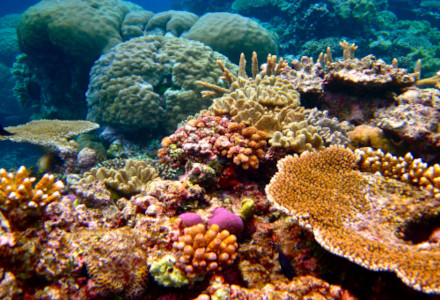
Great Barrier Reef Facts
- The descriptive term of Great Barrier Reef serves as the most frequently used name for this true marvel of natural processes. It presently has no other generally accepted alternate title. But none’s needed, as this wonder stands out from all similar features.
- The local Indigenous Peoples of its region long knew of this astounding natural formation, of course. Outsiders, however, did not learn of its existence until 1770. At that time, legendary Captain James Cook recorded the first observations by an outsider.
- Prior to that, and even subsequent to it, native groups made use of it. That occurred due to several reasons, of course. In addition to serving as a source of food, the site played an important role in the culture and spiritual lives of both indigenous groups.
- The breathtaking Great Barrier Reef ranks as one of the great natural wonders of the world. It represents the largest single structure composed of living organisms on earth. Its size is so great that the entire structure remains easily visible from outer space.
- Due to its astounding importance, this marvelous site was selected as a World Heritage Site in 1981. Thankfully, it now enjoys a certain measure of protection. The majority of the formation lies within the confines of the Great Barrier Reef Marine Park.
Related Articles
Great Barrier Reef Physical Description
The aptly-named Great Barrier Reef truly does earn its name. It does so for a variety of reasons, too. Perhaps most impressively, however, is the simple fact that it constitutes the single largest coral reef system known to man. Nature worked overtime on this one!
This wonder of natural processes qualifies as a collection of numerous individual reef systems. In fact, this currently includes in excess of 2,900 individual reefs. Yet there’s more to it than just that. A total of 900 islands of varying sizes also form part of the system.
The individual reefs, though, divide roughly into two separate divisions. The core, or central component is formed of about 2,100 larger reef constructs. Roughly another 800 somewhat smaller formations surround this central segment, completing the formation.
Given these facts, it’s not surprising that the formation also boasts some remarkable measurements. The entire system stretches a length of approximately 1,400 mi (2,300 km)! It also covers a mind-boggling area. Its total area measures 133,000 sq mi (344,400 sq km)!
The Great Barrier Reef shares one basic trait with all other related features, though. It’s comprised of the bodies of, and built by, the efforts of many billions of living organisms, known as coral polyps. The formation itself is literally considered a living organism.
Great Barrier Reef Location, Formation, and Ecology
The Great Barrier Reef formed in a general area of the world well known for its abundance of beauty. That includes both biological and geological. That’s due to the fact that this wonder of natural processes formed near the always intriguing continent of Australia.
Its precise location places it within the boundaries of what’s now appropriately known as the Coral Sea. That itself lies roughly off the coastline of the Queensland region of the country. It’s separated from the shore by a channel that’s a maximum of 100 mi (160 km) in width.
Evidence indicates that reefs first began forming in what’s now the Coral Sea Basin about 25 million years ago. Obviously, formations have come and gone repeatedly over that span of time. Researchers estimate that its present iteration began about 20,000 years ago.
Individual reefs within the greater formation often expand their diameter between 0.39 – 1.18 in (1 -3 cm) per year. Vertically, though, these same structures vary significantly in their growth. Overall, however, this expands anywhere from 0.39 – 9.84 in (1 – 25 cm) per year.
The visually stunning Great Barrier Reef supports an astounding abundance and diversity of life. That includes many currently vulnerable or endangered species of all kinds. Some of these additionally evolved as endemic to the reef system, and appear nowhere else.
More than 1,500 fish species live on this wonder of Nature. Thirty separate cetacean species also make their home here. A total of seventeen known varieties of sea snake live there, too. Six of the seven living species of sea turtle also come to this amazing location to breed.
Features Sharing Its Region
Check out our other articles on 5 Fully Fabulous Foxes, Southern Darwin’s Frog, Yosemite Valley, Golden Jackal, Genji-botaru, Philippine Cobra, Santa Rosa Island Manzanita

